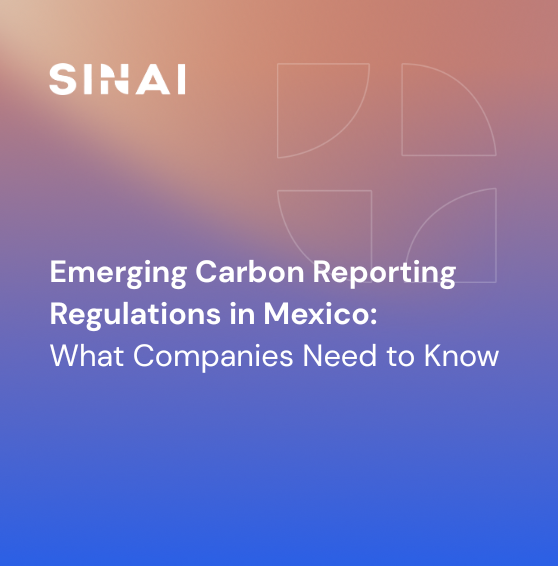
Understanding the EU’s New CBAM Regulation
Introduction
The EU’s new Carbon Border Adjustment Mechanism (CBAM) is a policy designed to address carbon leakage in the supply chain of several energy intense products. To fully understand how CBAM works, it’s important to first understand the EU’s Emission Trading System (ETS). To help accelerate decarbonization, the EU implemented the ETS on heavy industry, which is essentially a Cap-and-Trade policy that sets upper limits on GHG emissions (Cap) and allows companies to generate tradable credits if they are under their allocated cap (Trade). Unfortunately, the ETS has resulted in a shift in supply chains to procure high emission goods from regions where no carbon taxes exist. This concept is known as “carbon leakage”, and the CBAM policy is designed to correct this behavior and ensure the cost of GHG emissions is being evenly applied.
Timeline of Implementation
CBAM is a relatively new policy that will be implemented in a phased approach. CBAM officially began in October 2023 is expected to be fully implemented by early 2030. October 2023 marked the beginning the transitional period with the first quarter required for reporting. All reports are due on month after the close of the quarter, meaning the first CBAM reports are due at the end of January 2024. The end of 2025 will bring the close to the transitional phase, and on January 1, 2026 the permanent system will go live.
Once the permanent system is live, obligated parties will be required to issue annual reports highlighting the embedded GHG emissions that have been imported into the EU. These are in addition to the quarterly reports. With the annual report, obligated parties will need to submit enough CBAM certificated to cover the amount of GHGs that have been imported. These certificates will be priced on a weekly basis using averages from ETC carbon prices. This will help keep the two policies linked.
Additionally, flexibility on how GHG emission calculation methodology usage declines as the program moves towards maturity. In the early phases of the transition period, CBAM allows GHG estimations to be performed in one of three ways:
- Full reporting according to the new EU method
- Reporting based on an equivalent methodology
- Reporting based on default reference values
By 2025, however, only the EU methodology (option 1) will be accepted for calculating GHG emissions. Feel free to explore the policy in detail to understand how these methodologies work.
Impacted Industries
Not all goods are subject to a carbon border adjustment under CBAM. Only the most energy intensive products are included in this policy, and will be phased in over time. Once fully phased in, the CBAM policy will cover 50% of industries covered under the ETS. CBAM is starting with the mostThe regulation considers these products to be Cement, Aluminum, Fertilizers, Iron and Steel, Hydrogen, and Electricity. This first wave of industries went into effect in October 2023, with the remaining expected to be included no later than February 2030. These secondary industries include Petroleum and Petroleum Products, Inorganic Chemicals, non-ferrous metals, synthetic rubber, and industrial gases.
How to Report
The European Commission has issues. comprehensive set of guidelines to help you prepare for reporting requirements. As a part of the quarterly report, an obligated party needs to highlight the amount of goods imported, the country of origin, and the calculated embodied GHG emissions. The policy requires all GHG emissions to be reported to the nearest metric tonne of CO2 which are calculated using factors to 5 decimal points.
The methodology used to calculate emissions covers a part of the life cycle of the product in a way that is similar to a Product Carbon Footprint (PCF), but is not the same. PCFs are designed to capture the amount of emissions on a per unit basis and cover the entire cradle to gate or cradle to grave process. The CBAM does not include raw materials or the gate to grave sections of a full PCF. The difference is highlighted in the image below from the European Commission’s guidance document.
Additionally, CBAM is not interested in the per unit calculation. Rather, the policy seeks to understand the total amount of emissions that were generated as a result of these imports, as if the products were produced locally.
Preparing for CBAM
To be fully prepared for CBAM, it’s important to understand your business’s supply chain and where your imports are coming from. This includes building relationships with your suppliers to better understand their data. During the transitional period, high level estimations from reference values will be adequate for reporting, but as the policy moves towards maturity in 2026, more detailed primary data will be necessary for CBAM compliance. This means maintaining detailed records and centralized data is going to be critical to best understand your companies imported emissions into the EU. SINAI can help streamline this task by helping you engage with your suppliers, perform accurate GHG calculations in the manner you need, and keeping track of import metrics that are obligated under the EU CBAM policy.












